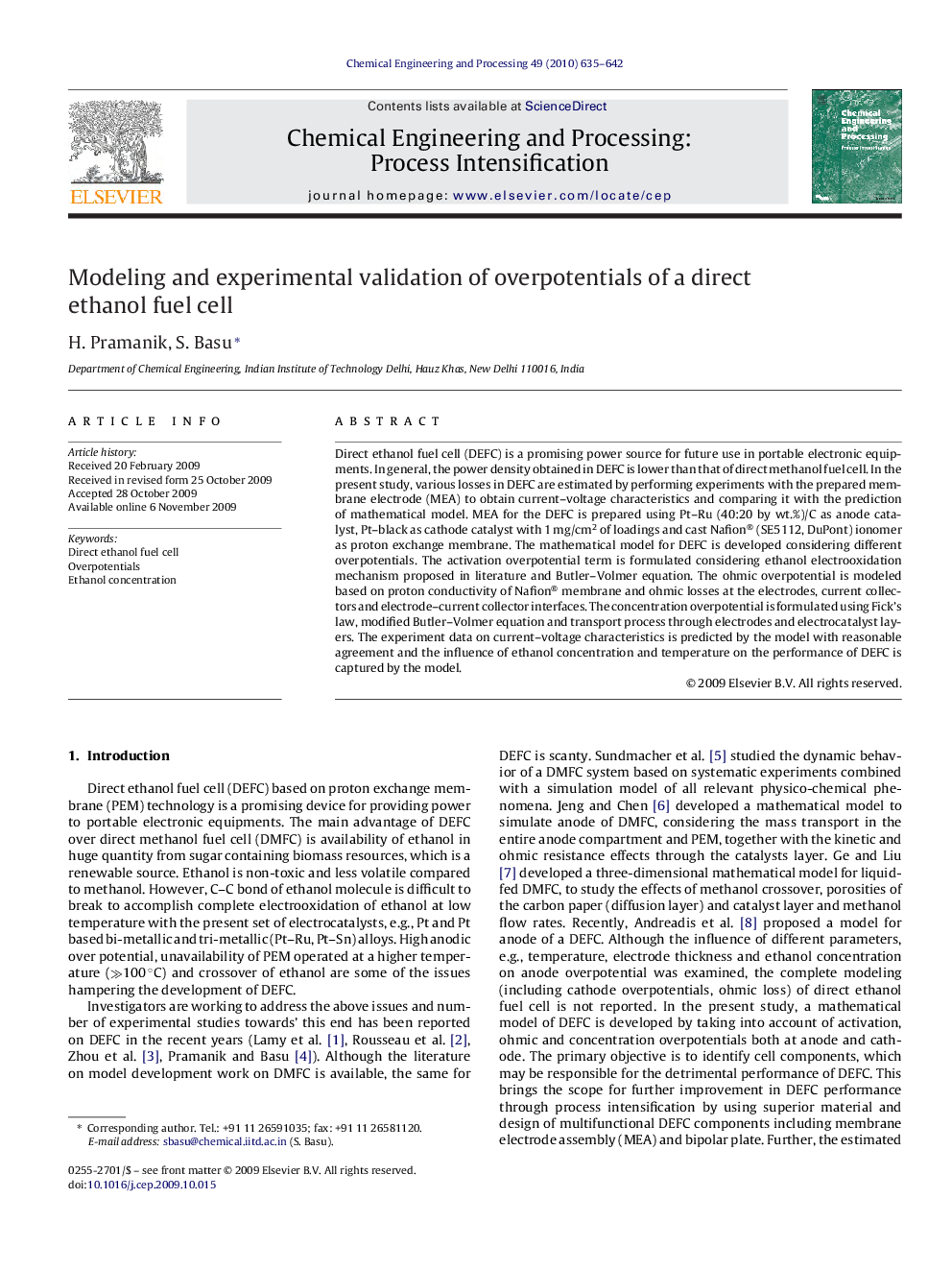| Article ID | Journal | Published Year | Pages | File Type |
|---|---|---|---|---|
| 687312 | Chemical Engineering and Processing: Process Intensification | 2010 | 8 Pages |
Direct ethanol fuel cell (DEFC) is a promising power source for future use in portable electronic equipments. In general, the power density obtained in DEFC is lower than that of direct methanol fuel cell. In the present study, various losses in DEFC are estimated by performing experiments with the prepared membrane electrode (MEA) to obtain current–voltage characteristics and comparing it with the prediction of mathematical model. MEA for the DEFC is prepared using Pt–Ru (40:20 by wt.%)/C as anode catalyst, Pt–black as cathode catalyst with 1 mg/cm2 of loadings and cast Nafion® (SE5112, DuPont) ionomer as proton exchange membrane. The mathematical model for DEFC is developed considering different overpotentials. The activation overpotential term is formulated considering ethanol electrooxidation mechanism proposed in literature and Butler–Volmer equation. The ohmic overpotential is modeled based on proton conductivity of Nafion® membrane and ohmic losses at the electrodes, current collectors and electrode–current collector interfaces. The concentration overpotential is formulated using Fick's law, modified Butler–Volmer equation and transport process through electrodes and electrocatalyst layers. The experiment data on current–voltage characteristics is predicted by the model with reasonable agreement and the influence of ethanol concentration and temperature on the performance of DEFC is captured by the model.
